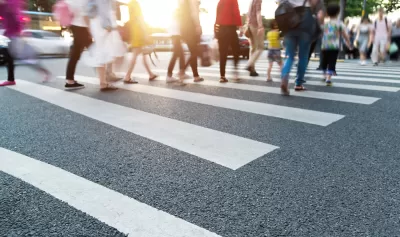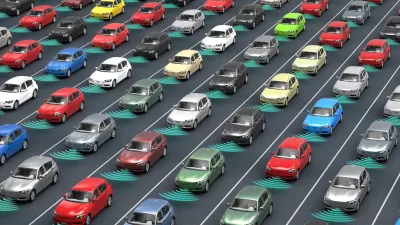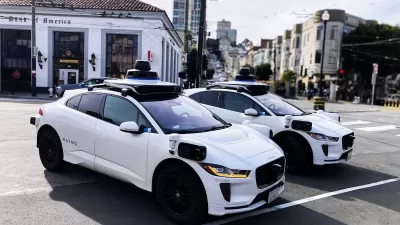With some historical perspective, transportation planners and policymakers can avoid the mistakes of the past and develop a transportation system that acknowledges the needs of all road users.

In a commentary published on Route Fifty, Kevin DeGood calls for “a balanced transportation system that also accommodates pedestrians, transit riders and cyclists” as autonomous vehicles become more commonplace on U.S. streets.
While the debate on when autonomous cars will be fully ready for self-driving operations rages on, DeGood argues that now is the time for policymakers to avoid heading “down a path that deepens our dependence on cars at the expense of sustainable, affordable and equitable alternatives such as public transportation, biking and walking.”
The article names several studies of autonomous vehicle technology that fail to include pedestrians, or even pedestrian infrastructure, in their assessments of self-driving vehicle safety. “And that’s the problem. The infrastructure we build today and how we program AVs will shape our lives and communities for generations to come.”
In the early 20th century, when cars were first introduced, policies led to “a transportation system dominated by driving” and laser-focused on moving cars, fast. DeGood warns that “Accommodating pedestrians, transit riders and cyclists cannot be an afterthought. Communities and transportation systems must be built around people, not motor vehicles. A transportation system that only makes room for sophisticated AVs is a system and a future not worth having.”
FULL STORY: What kind of transportation future do we want?

Alabama: Trump Terminates Settlements for Black Communities Harmed By Raw Sewage
Trump deemed the landmark civil rights agreement “illegal DEI and environmental justice policy.”

Planetizen Federal Action Tracker
A weekly monitor of how Trump’s orders and actions are impacting planners and planning in America.

The 120 Year Old Tiny Home Villages That Sheltered San Francisco’s Earthquake Refugees
More than a century ago, San Francisco mobilized to house thousands of residents displaced by the 1906 earthquake. Could their strategy offer a model for the present?

In Both Crashes and Crime, Public Transportation is Far Safer than Driving
Contrary to popular assumptions, public transportation has far lower crash and crime rates than automobile travel. For safer communities, improve and encourage transit travel.

Report: Zoning Reforms Should Complement Nashville’s Ambitious Transit Plan
Without reform, restrictive zoning codes will limit the impact of the city’s planned transit expansion and could exclude some of the residents who depend on transit the most.

Judge Orders Release of Frozen IRA, IIJA Funding
The decision is a victory for environmental groups who charged that freezing funds for critical infrastructure and disaster response programs caused “real and irreparable harm” to communities.
Urban Design for Planners 1: Software Tools
This six-course series explores essential urban design concepts using open source software and equips planners with the tools they need to participate fully in the urban design process.
Planning for Universal Design
Learn the tools for implementing Universal Design in planning regulations.
Clanton & Associates, Inc.
Jessamine County Fiscal Court
Institute for Housing and Urban Development Studies (IHS)
City of Grandview
Harvard GSD Executive Education
Toledo-Lucas County Plan Commissions
Salt Lake City
NYU Wagner Graduate School of Public Service





























